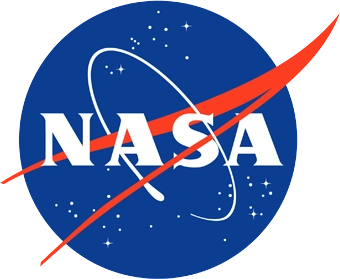Research Page
Applications and Algorithms
The Terrestrial Information Systems Laboratory supports the development of the following applications and algorithms:
- Land Climate Data Record and Surface Reflectance
- The Terrestrial Information Systems Laboratory provides surface reflectance data to the Land Climate Data Record. This data is one of the key products used to develop several land Essential Climate Variables such as vegetation indices, albedo and Leaf Area Index, etc. As a Fundamental Climate Data Record for land, it’s important for detecting trends in the biosphere and land surface. These climate data records are used to monitor long-term changes to climate and vegetation.
- Geolocation
- Geolocation is a team of scientist, developers and analysts responsible for performing geometric characterization and accurate Earth location (geolocation) of satellite optical instrument data. The current instruments and missions supported by this activity are the MODIS instruments on Terra and Aqua platforms; VIIRS instruments on Suomi NPP and JPSS-series (NOAA-20, NOAA-21, etc.) platforms; the ABI (Advanced Baseline Imager) and GLM (Geostationary Lightning Mapper) instruments on the GOES-R series platforms; and commercial satellite data.
- FIRMS (Fire Information for Resource Management System)
- FIRMS (Fire Information for Resource Management System) distributes near real-time active fire data for global monitoring and applications, providing users with access to fire maps, data, alerts and analysis tools.
- LANCE (Land, Atmosphere Near real-time Capability for EOS)
- LANCE (Land, Atmosphere Near-real-time Capability for Earth observation) MODIS and VIIRS Near Real-Time (NRT) processing systems deliver Level-2 products within 3 hours of satellite observation for multiple applications and full-resolution images to ESDIS Project’s Global Imagery Browse Services (GIBS) for use in NASA Worldview and the Earth Information Center.
- Agriculture and Food Security
- The Terrestrial Information Systems Laboratory supports the generation of high-end data products for use in research and operational agricultural monitoring by agricultural communities including: USAID's Famine Early Warning, USDA Foreign Agricultural Service (USDA FAS) and NASA’s Agriculture Programs, such as NASA Harvest and NASA Acres, for applications like cropland area mapping, global crop phenology, crop condition monitoring, and crop yield estimation.
- Flood Mapping
- The MODIS NRT Global Flood Product provides near real-time global flood extent data, based on Terra and Aqua MODIS imagery. This information can be critical for officials and disaster relief organizations to focus their efforts. NASA's LANCE (Land, Atmosphere Near real-time Capability for EO) delivers a level-3 flood product at 250 m, over , over 1-to-3-day compositing periods. GIBS imagery products are also generated and delivered to NASA Worldview, to facilitate user access and browsing capabilities.
- Black Marble (Day/Night Band)
- Lights at night improve our understanding of interactions between human systems and the environment. NASA developed the Black Marble, a daily calibrated, corrected, and validated product suite, so nightlight data can be used effectively for scientific observations. The Black Marble plays a vital role in research on light pollution, illegal fishing, human-caused CO2 emissions, fires, impacts and recovery from disasters, human health, and energy infrastructure. The Terrestrial Information Systems Laboratory supports the processing, archiving, and distribution of this critical data product.

